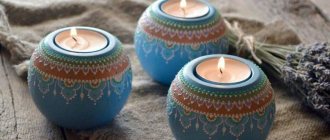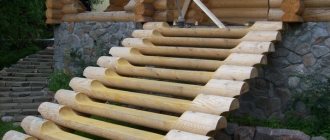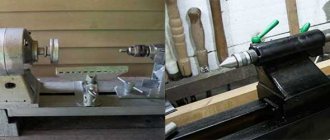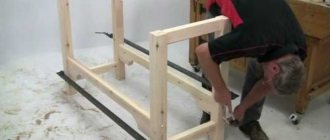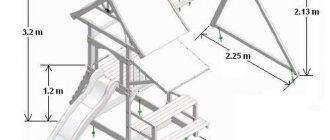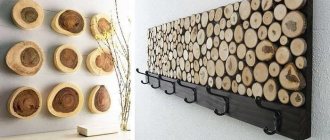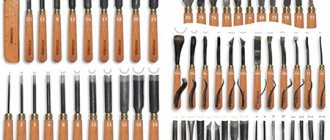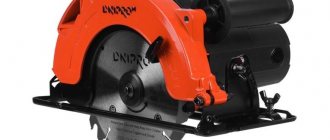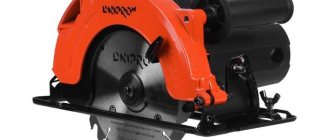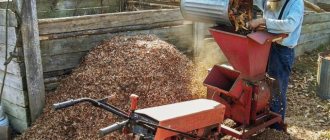How to make a wire burning tip
Wire nozzle for burning
You can independently make nozzles of the required shape from wire. The most popular designs of wire nozzles include beak-shaped and spoon-shaped nozzles.
When making your own nozzle, always remember that the quality of your future projects largely depends on the accuracy and correctness of the nozzle. The main material for creating a wire nozzle is nichrome wire with a diameter of 0.5 to 1 mm.
Wire nozzle for burning
How to make a mini wood burner
Find or make a suitable wooden handle with your own hands - it is advisable to use a rectangular blank. Many home craftsmen advise using a wooden glazing bead rather than a block as a holder, but in this case this option will not work. Hammer two nails into the end of the future handle-holder. If desired, you can pre-drill holes of a smaller diameter to prevent the workpiece from splitting. After hammering nails into a wooden block, bite off their heads - they will not be useful.
At the next stage, you need to mark a line along the base of the workpiece (on both sides) and cut grooves for the wire. To do this, you can use either special carpentry tools or a regular stationery knife. Process the grooves for the wires and the homemade wood burner itself with a file to give the entire “structure” a rounded shape. Then install the power supply socket with wires on the back of the workpiece, securing everything with epoxy or superglue. Rewind the connection points between the wires and the connector with electrical tape.
Next, connect the ends of the wires and the protruding metal pins that were made from nails. For greater reliability and good electrical contact, it is better to solder the places where the wires come into contact with the nails. Then install connecting terminals on the free ends of the pins and secure them with screws. Also rewind the lower part of the “holder” with electrical tape. It is best to use a medical needle as a working heating element for a simple burner. Using a pin, carefully grind off its central part so that it heats up in this place. Cut off the plastic cap from the syringe needle, which is located at the base, and the sharp end with wire cutters.
At the last stage of the work, all that remains is to give the metal blank from a medical needle the shape of a bracket or loop (by analogy with a lavalier-type pyrograph) and fix the two free ends in the connecting terminals. As a power source, use a power adapter with similar characteristics:
— Input: 100–240 V; — Output: 5 V = 3A.
Connect the charger to the connector on the handle and then you can start drawing. This is how you make a mini wood burner with your own hands at home. Instead of a medical needle, you can use nichrome wire. You can also consider alternative methods for making household pyrographs.
Making a spoon-shaped nozzle
A spoon nozzle is essentially a regular wire nozzle with a small loop at the tip. This attachment, just like the previous one, can be easily made independently, and from the same beak-shaped attachment. To do this, it is enough to flatten its tip (beak) on something hard, for example, a small anvil or on the head of a hammer mounted in a vice or on the body of the vice itself, if they are strong enough.
Wire nozzle for burning
When flattened, burrs may appear that distort the profile of the nozzle and must be removed by carefully treating the nozzle with sandpaper or a needle file.
Many burning kits you can buy in stores come with a set of wire tips, so don't forget that.
Source
Burner handle.
The handle of the burner is made of a marker body, into which a rectangular piece of foil PCB with two tracks is tightly inserted. You can use double-sided PCB. Brass pins with bolts from a regular 220V plug are soldered to these two tracks on one side, to the bolts of which a sting made of nichrome wire is screwed. On the other hand, the ends of the wire going to the secondary winding of the transformer are soldered to the PCB tracks. And this entire structure is located inside the marker body. The pins from the marker body should protrude a certain distance in order to distance the nichrome tip and the marker body to prevent it from melting. That is, the tip should not be located directly close to the plastic of the marker body.
How to replace the needle in the “Pattern” burner
3. Make sure that there are no objects near the work site that could easily catch fire and cause a fire. Of course, it is better not to start work if any malfunctions are detected. 4. During operation, use the soldering iron carefully, do not drop it or use it as a hammer. 5. When soldering, beware of splashes of liquid solder and do not touch the heated areas of the soldering iron. 6. When taking breaks from work, place the hot soldering iron on a non-flammable surface. Do not pull the plug out of the socket by the wire. If you need to leave your workplace, turn off the soldering iron. 7. When soldering, tinning and working with acids, use rubber gloves and safety glasses, and use tweezers for these purposes. 8. All chemicals used for soldering must be kept in glass containers and ground glass stoppers, because acids are quite dangerous and harmful. Each container must have an inscription with the name of the substance that is stored in it. 9. Pickling of products before soldering and pickling of acid for the production of zinc chloride should only be carried out in a well-ventilated area. 10. Be careful with soldering acids. Do not spill them on the table, floor, clothes or shoes. Do not touch it with your hands and under no circumstances try it on your tongue, especially zinc chloride (acid). 11. After finishing work, carefully turn off the soldering iron. Clean up your work area. Put back the tools you used and the sulfuric acid. Let the soldering iron cool down, after which it can also be put back in place. 12. After work, be sure to wash your hands with soap.
Safety rules when working with pliers 1. Before work, check the serviceability of the tool. 2. Never use pliers as a hammer. Such abuse will most likely result in tool failure. 3. Only bite off hardened wire with pliers designed for this purpose. 4. Always cut the wire at right angles. Never move the pliers from side to side or bend the wire back and forth away from the cutting edges. 5. When working with pliers, do not hold the wire at face level. 6. When working, do not place the fingers of your left hand (if you are left-handed, then behind the fingers of your right hand) between the cutting edges. 7. Hand the tool to a friend with the handles first and closed. 8. After work, put the tool back in its place.
Source
Tuesday, September 4, 2012
design of a tip for wood burning on a machine
then we insert it tightly into the inside of our case and on top we wrap nichrome, I have 0.5 mm so that it turns out like this
Well, we put it on the machine, I have a floating head on a bearing, it works from both the Z axis and an electromagnet
attached to the head using the insides of a 3-amp block, available in all hardware stores
this is what happened as a result,
We sell Chinese ones, but to what extent are they diamond? the copper tip actually oxidized after an hour of work, that’s what I did with the photo: I somehow didn’t think about it right away because the soldering iron really burns. I replaced the tip with an iron one from a nail (temporarily, with difficulty I pulled out the old one with scale; it couldn’t fall out, this is about the issue of falling out) I tried to burn out small text, I can’t even speak and so everything is visible, the height of the letters is 3 mm, but I’m thinking of just burning it out You can try it with diamond.
In relays and contactors, the silver in the contacts is impure and impregnates the base with something like ceramics or sand, I don’t know for sure, there is not enough of it, if you take a few I think it will be enough for a drop, but for such purposes I don’t think cleanliness is so important that it won’t burn, then for faster heating and maintain a stable temperature, wrap the device on top of the thread with a heat-insulating thread, for example, asbestos thread. B By the way, to control the temperature you can use a simple Chinese multimeter with a thermometer, I don’t remember the model, I think 830, but there the sensor works up to a temperature of 1300 degrees and the wires to it are heat-resistant. Today I bought a diamond Chinese glass cutter, the insert in it is made of brass, I tried it out of interest and put the insert on the burner, the result is the same, it burns out) Tomorrow I will deal with the scale, I will lower the temperature and experiment in general) Yes, about the stripes, I burn out the photos due to the small amount of plywood 8x8 or 6x6 cm, whatever you need, and if you look at them, you can see the stripes, but on a large one, there probably won’t be anything, in general, I’ll try. Or he can use the experience of making a disposable tip for a soldering iron, the point is that the copper tip is coated with a substance (liquid glass + quartz sand from fuses (talc can be used), until it becomes sour cream), then dried, then a spiral is wound onto the coating, then everything is wrapped with glass fiber and that’s it, the heater is ready. I did this with a soldering iron 3-4 years ago, it works and works sometimes for days. Pros: Instead of ceramics from the resistor, coating is on the tip itself. Minus the disposable sting.
Next version: I took a ceramic carrier from a lighter with a spiral, heated it up to 1000 degrees, everything was ok! I inserted a 3 mm diameter rod inside, ground into a cone and polished from contact silver, put 4 turns of 0.8 mm nichrome on top, wound it on a mandrel, then inserted ceramics into it, fastened it in the same way as the old one, everything sits quite rigidly, cold and hot, here is a photo:
Also, I redid the burner circuit off-topic and just put it in a pile, the trance from the burner wound up the secondary a little, raised the voltage to 3 volts, removed the factory wire rheostat in the primary circuit because it was heating up because of this the voltage was low, installed a regulator on a triac from a burnt-out vacuum cleaner, and got the output is stable adjustment from 0 to 3 volts. The head heats up to, say, 479 degrees per minute, when in contact with wood the temperature does not drop, it takes a long time to cool down, I got burned wrapping asbestos (I wrapped it with a 2 mm cord on top), the whole structure holds the load and with the electromagnet when it drops when turned off, it doesn’t move. Tomorrow I'll burn it on new plywood and post a photo. I’m answering the question (if any) why I refused the diamond, it’s a little thick, you can’t sharpen it, and I brought out the rod as I needed. Just wondering, has anyone burned out small text 3mm high, did it work? or unrealistic, I don’t set it as an end in itself, it’s just interesting. I had to abandon asbestos due to its disintegration when heated, I wrote the text with an artcam and turned on raising the head with a magnet, asbestos began to fall onto the workpiece due to vibration, not all of it, of course, but there is some. I'll try to coat it with silicate and sand as suggested above. here is a photo of samples of working with artkam, (if the time after lowering the head is reduced, you can write small things, the letters at the top are 3 mm)
then combined 2 ideas into one,
I tried coating it with sand and silicate and it didn’t work out well, I decided to soak it in asbestos and wrapped it around it, dried it by turning on the heater for at least 30 minutes, then added temperature, it worked.
The coating is durable, relatively sure, but don’t jump on it. here are the final photos,
I burned out the head above in the post, the stripes and dots in the photo are my jambs (I adjusted the heating and did not work in Photoshop) the head behaves normally,
But that is another story. Let's see how long this modification will last
Source
How to make a wood burner with your own hands - a homemade pyrograph from a soldering iron
Have you ever wanted to capture a beautiful design or pattern in your wood crafts? Do you have an old, unused (but still working) soldering iron? So you're in luck. This tutorial will teach you how to make your own wood burner and how to turn ordinary nails into versatile, easy-to-use pyrography (wood burning) tools. This project is also great for those who want to learn how to make fires but don't know where to start.
We use an old soldering iron tip as a template when making new pyrography tools, but of a shortened length to reduce heating time.
Materials and tools needed for work
Before you start mastering wood burning, you need to decide on the tools and materials that will be required for the work. There is no need to use anything expensive or rare.
You can start training with simple plywood and a special inexpensive apparatus.
The tool can always be replaced with a regular soldering iron, and any pieces of wood can be used as material:
- Cuttings of boards, fresh dead wood cleared of bark, or waste from woodworking in a suitable format.
- To expand creative possibilities or replace equipment with improvised means, various metal objects are used: nails, knitting needles, stamps.
Such tools need to be heated over an open flame. To create professional masterpieces, you can use pieces of solid wood as a material, but this is expensive.
Design and principle of operation of a wood burner
The device of a pyrograph is generally very simple. A piece of nichrome wire is attached to a wooden handle, to which electrical voltage is supplied. Under the influence of current, nichrome heats up to a temperature of about 1000 degrees. If you run a hot tip over the surface of a board or plywood, it leaves a scorched mark, just as a pen leaves an ink mark.
Next, we consider the manufacture of a pyrograph powered by a voltage of 5 V from a computer power supply.
Battery operated burner
To make an electric burner, similar to a pyrograph on nichrome wire, you will need: - syringe needles; - two-wire wire; - small toggle switch; - strong threads; — rechargeable battery; - wooden stick.
Take two needles and cut off the lower part from them, which fits onto the “nose” of the syringe. Then screw the wires onto the blunt end of the needles. After this, securely fix the medical needles with threads on the lower end of the wooden stick. Also connect the wires to the toggle switch, and then glue the battery itself and the toggle switch to the handle-holder, carefully connecting the elements together. Detailed diagrams of a burner with a battery can be found on the Internet.
Take the pliers and bend the ends of the needles so that they touch tightly. That's all. Now you can start drawing images and designs on plywood or a wooden blank. [adace-ad id=”1108″]
